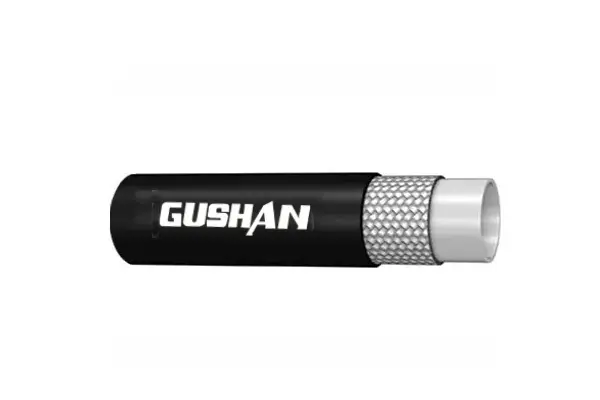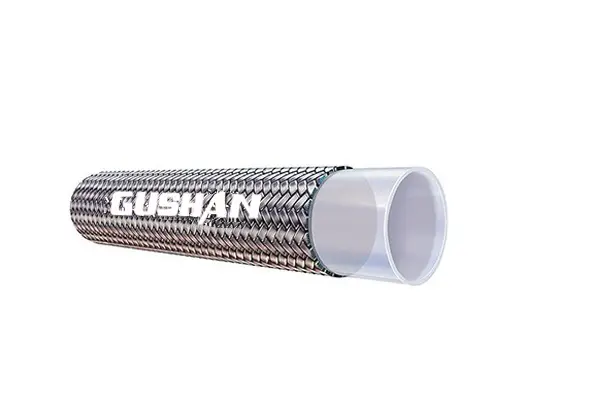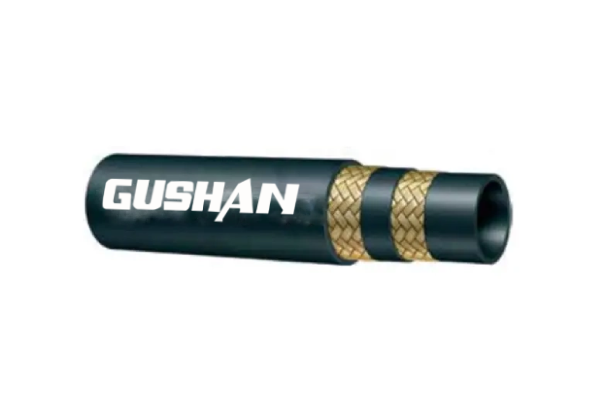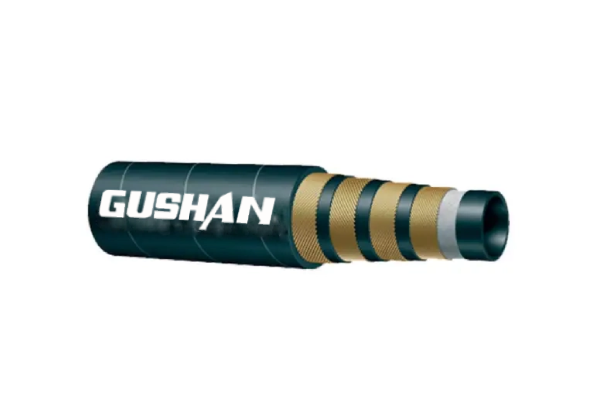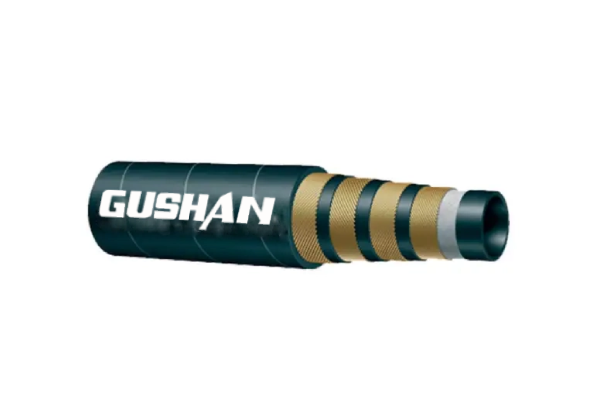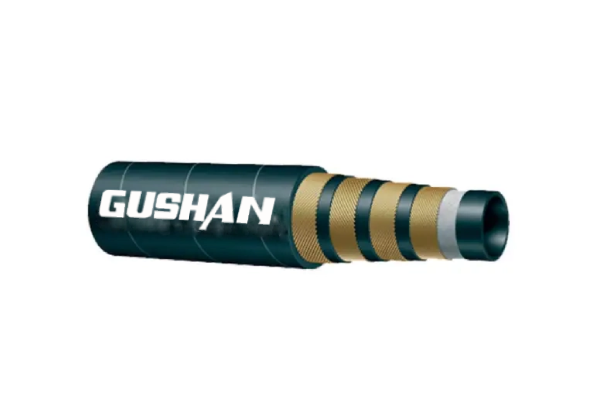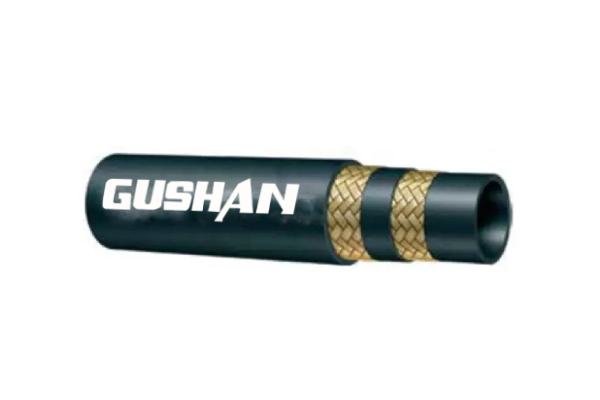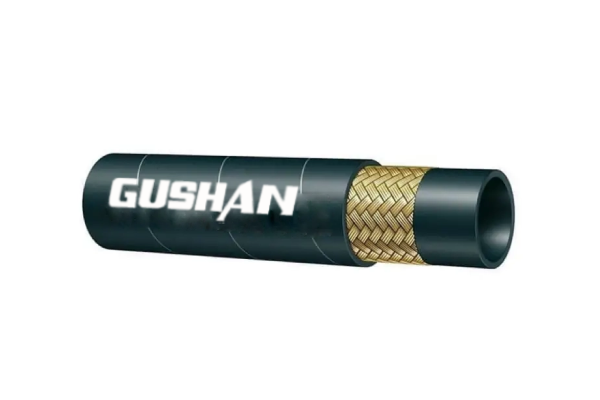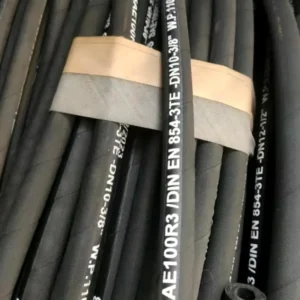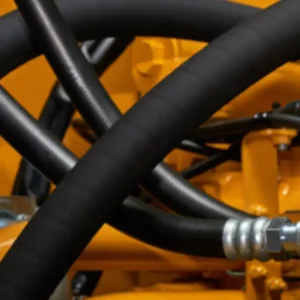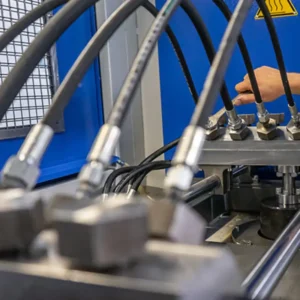Choosing the right hydraulic hose is crucial to the efficiency, safety, and longevity of any hydraulic system. As experts in this field, we understand that this is a critical decision. The wrong choice can lead to costly downtime, premature failure, or even dangerous situations.
In this guide, we’ll break down the essential factors to consider, backed by industry standards and real-world applications, to help you make an informed decision.
Hydraulic Hose Basics
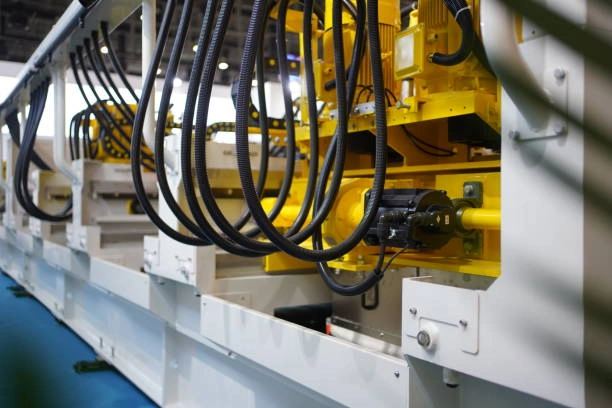
Hydraulic hoses are the crucial, flexible conduits designed to carry high-pressure fluid power in machinery, acting as the system’s arteries. They convert mechanical energy from a pump into force at the actuators. Understanding their multi-layered construction, pressure ratings, and material compatibility is fundamental to system safety and longevity.
Recommended Hydraulic Hoses
-
SAE 100R7
-
SAE 100 R14
-
SAE 100R 2A / DIN EN853 2ST
-
SAE 100R 1A / DIN EN853 1ST
-
SAE 100R12
-
SAE 100R13
-
SAE 100R15
-
SAE 100R16
-
SAE 100R17
- Inner Tube (The Fluid Carrier) This innermost layer, often made from synthetic rubber (like nitrile) or thermoplastic, must be perfectly compatible with the hydraulic fluid (oil or synthetic). Its primary role is to contain the fluid without degradation, minimizing permeation and maintaining the integrity of the hydraulic medium.
- Reinforcement Layer (The Strength) This is the “muscle” of the hose, typically consisting of one or more layers of high-tensile steel wire or textile fibers, either braided or spiral-wound. It is engineered to withstand the extreme internal pressures and pressure spikes inherent in high-power hydraulic systems.
- Outer Cover (The Protector) The outermost layer, commonly made of synthetic rubber (such as neoprene) or thermoplastic, acts as a shield against environmental damage. It protects the reinforcement from abrasion, moisture, ozone, UV exposure, and oil, which ensures the hose’s structural integrity and extends its service life.
- Hose Fittings (The Connectors) These are the specialized metal end pieces (often steel or brass) that are permanently attached to the hose ends by hydraulic crimping. They provide a secure, leak-proof connection to the pump, valves, motors, and cylinders, completing the sealed circuit for fluid power transmission.
How to Choose Hydraulic Hose?
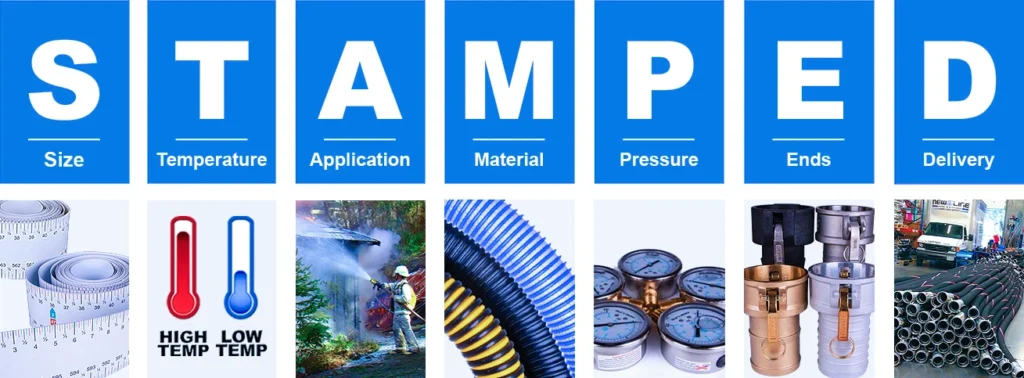
When we approach the task of selecting a hydraulic hose, we follow a systematic process to ensure every critical aspect is considered. This method, often remembered by the acronym STAMPED, helps us meticulously evaluate the application requirements against the host’s capabilities. Let’s break down each element of this crucial framework.
S-Size: Getting the Diameter Right
The internal diameter (ID) of a hydraulic hose is paramount. If the ID is too small, it can lead to excessive fluid velocity, resulting in pressure drops, increased heat generation, and turbulence. Conversely, an ID that’s too large can make the system less efficient and more expensive. We always measure the existing hose’s ID or calculate the required size based on the system’s flow rate and desired fluid velocity.
Here’s a quick reference table for common hose sizes and their typical applications:
| Nominal Hose Size (Dash Size) | Inner Diameter (Inches) | Typical Applications |
| -4 | 1/4 | Small hydraulic lines, power steering |
| -6 | 3/8 | Medium-pressure lines, agricultural equipment |
| -8 | 1/2 | Industrial machinery, construction equipment |
| -12 | 3/4 | Heavy-duty industrial hydraulics, large mobile equipment |
| -16 | 1 | High-flow industrial applications, large excavators |
T-Temperature: Considering Both Internal and External
Temperature is a dual consideration: the temperature of the fluid passing through the hose and the ambient temperature of the environment where the hose operates. Both extremes can significantly impact the hose’s performance and lifespan. We need to ensure the hydraulic hose can withstand both the maximum and minimum temperatures it will encounter.
- Fluid Temperature: High fluid temperatures can degrade the inner tube material, leading to hardening or softening, and can also affect the fluid’s viscosity. Low temperatures can make the hose brittle and more susceptible to cracking.
- Ambient Temperature: The external environment can also cause the outer cover to degrade, especially in extreme heat or cold.
We always check the manufacturer’s specifications for the hose’s maximum and minimum operating temperatures to guarantee it falls within the required range for your application.
A-Application: Understanding the Environment and Use
The application dictates many of the hose’s required characteristics. We thoroughly analyze how the hydraulic hose will be used and the environment it will operate in. This includes:
- Type of Fluid: Is it petroleum-based, water-based, or synthetic? The inner tube material must be compatible with the fluid to prevent chemical degradation.
- Operating Pressure: This is a critical factor. We consider the system’s maximum working pressure, surge pressures, and any potential pressure spikes. The hose’s working pressure rating must always be greater than or equal to the system’s maximum operating pressure.
- External Environment: Will the hose be exposed to abrasion, chemicals, UV radiation, ozone, salt water, or extreme weather? We select an outer cover material that can withstand these specific conditions to prevent premature wear.
- Flexibility and Bend Radius: Does the application require the hose to bend frequently or operate in tight spaces? We factor in the minimum bend radius to prevent kinking, which can restrict flow and damage the hose.
M-Materials: Ensuring Compatibility
Material compatibility extends beyond just the inner tube and the hydraulic fluid. We also consider the materials of the hose fittings and adapters to ensure they are compatible with both the hose and the fluid. Incompatibility can lead to corrosion, leaks, or system contamination. We ensure that the hydraulic hose material is suitable for the specific fluid it will carry, preventing issues like swelling, shrinking, or chemical breakdown.
P-Pressure: Matching Hose to System Demands
As mentioned under “Application,” pressure is a standalone, critical consideration. We not only look at the static working pressure but also the dynamic pressures, including surges and impulses. The hose’s working pressure rating must always exceed the maximum system pressure, and its burst pressure should be at least four times the working pressure for a safety factor.
Here’s a simple calculation we often use:
Safety Factor = Burst Pressure/Working Pressure
A common industry standard is a 4:1 safety factor for general hydraulic applications.
E-Ends (Fittings): Selecting the Right Connection
The choice of fittings is just as important as the hose itself. We need to select the correct fitting type, thread style, and material to ensure a leak-free and secure connection. Common fitting types include:
- NPT (National Pipe Taper): Common in North America, provides a mechanical seal.
- SAE (Society of Automotive Engineers) J514 37° Flare (JIC): Very common, provides a metal-to-metal seal.
- ORFS (O-Ring Face Seal): Excellent for leak prevention, uses an O-ring for sealing.
- BSP (British Standard Pipe): Used extensively outside of North America.
- Metric Fittings: Various types, common in European and Asian machinery.
We ensure that the hose assembly includes fittings that are compatible with the system’s ports and can withstand the same pressure and temperature ratings as the hose. Proper crimping is also vital for the integrity of the hose assembly.
D-Delivery (Route and Length): Optimizing Installation
The routing and length of the hydraulic hose have a significant impact on its performance and lifespan. We always aim for the most optimal route to minimize stress on the hose and fittings.
- Length: The hose should be long enough to accommodate movement, thermal expansion/contraction, and vibration without being taut. We often include a slight slack to absorb these movements. Too short a hose can lead to tension and premature failure, while too long can create excess friction and heat.
- Routing: Avoid sharp bends, twists, and routing hoses over sharp edges. We use clamps and protectors where necessary to prevent abrasion. If multiple hoses are routed together, we consider using spirally wrapped protection to prevent rubbing.
- Bend Radius: Always adhere to the hose manufacturer’s minimum bend radius to prevent kinking, which restricts flow and damages the reinforcement layers.
The Importance of Hydraulic Hose Quality and Certification
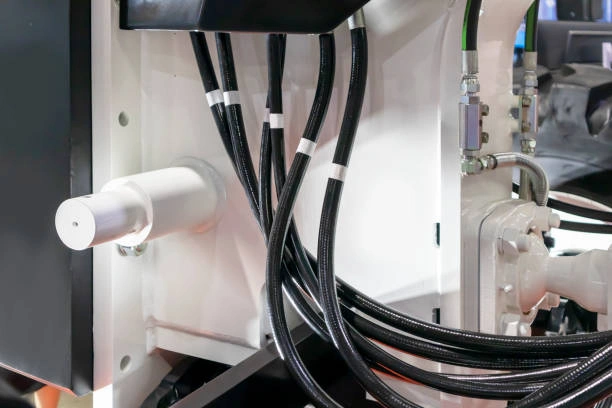
When we help you select the best hydraulic hoses, we always emphasize the importance of quality. We recommend hoses that meet or exceed international standards such as:
- SAE (Society of Automotive Engineers): Widely used in North America, with standards like SAE J517 specifying hose types (e.g., 100R1, 100R2).
- EN (European Norm): European standards, often harmonized with ISO.
- ISO (International Organization for Standardization): Global standards, such as ISO 18752 for hydraulic hose specifications.
Using certified hoses ensures that they have undergone rigorous testing for pressure, temperature, flexibility, and durability, providing peace of mind and reliable performance.
Common Hydraulic Hose Mistakes to Avoid
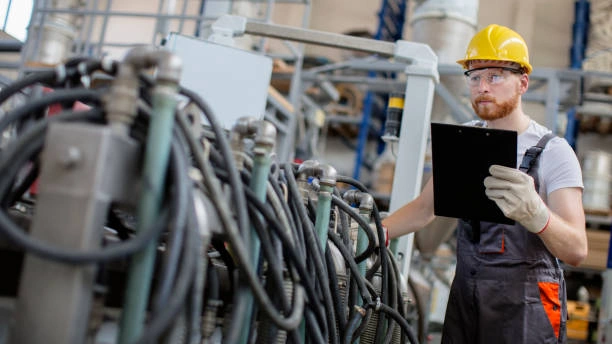
Avoiding common errors in selecting, routing, and installing hydraulic hoses is essential for maximizing system efficiency and operator safety. Since these high-pressure components are the arteries of any fluid power machine, even a small mistake can lead to catastrophic failure, system downtime, and expensive repairs.
- Incorrect Hose Selection (STAMPED) A frequent error is neglecting the full STAMPED criteria (Size, Temperature, Application, Media, Pressure, Ends, Delivery) during selection. Using a hose not rated for the system’s maximum working pressure or fluid type will cause the hose tube to swell, crack, or burst prematurely, risking severe injury.
- Ignoring Minimum Bend Radius Bending the hose tighter than the manufacturer’s specified minimum bend radius (MBR) is a major cause of failure. This excessive stress on the reinforcement layers and inner tube can lead to kinks, restrict fluid flow, and cause early hose rupture under pressure.
- Twisting the Hose During installation, if the hose is twisted (even by just a few degrees) between the end fittings, its service life can be dramatically reduced. Twisting prevents the reinforcement from handling pressure correctly, leading to reduced pressure capacity and accelerated fatigue failure.
- Incompatible Fluid/Material Using a hose material that is not chemically compatible with the hydraulic fluid being conveyed will cause the inner tube to rapidly degrade. This results in tube swelling, blistering of the cover, or contamination entering the hydraulic system, which can damage expensive components.
- Improper Fitting Crimping The crimp that secures the fitting to the hose must be precisely calibrated to the hose and fitting specifications. Under-crimping risks the fitting blowing off under pressure, while over-crimping damages the hose’s internal structure, compromising the high-pressure seal.
- Routing Issues (Abrasion and Heat) Hoses routed where they rub against moving parts, sharp edges, or other hoses (abrasion) or run too close to high-temperature surfaces will fail prematurely. Abrasion wears down the protective outer cover, exposing and damaging the crucial reinforcement layer.
Conclusion
By systematically applying the STAMPED methodology—considering size, temperature, application, material, pressure, fittings, and delivery method—we ensure every aspect of your hydraulic hose selection is thoroughly evaluated.
Investing the time to make the right choice upfront will undoubtedly save you time, money, and potential risks later. We’ll guide you every step of the way, ensuring you always have the most reliable and efficient hydraulic hose solution for your needs.

